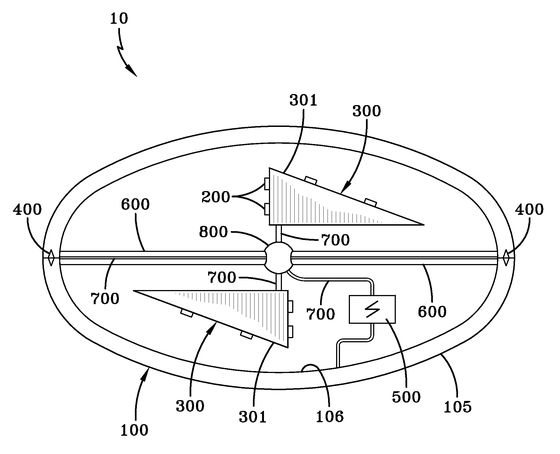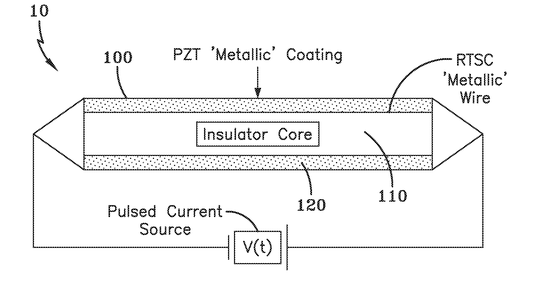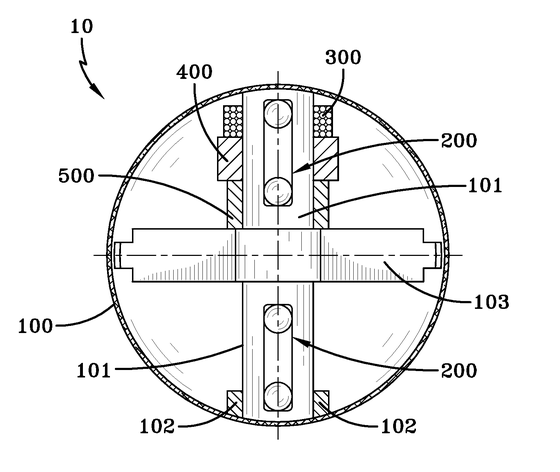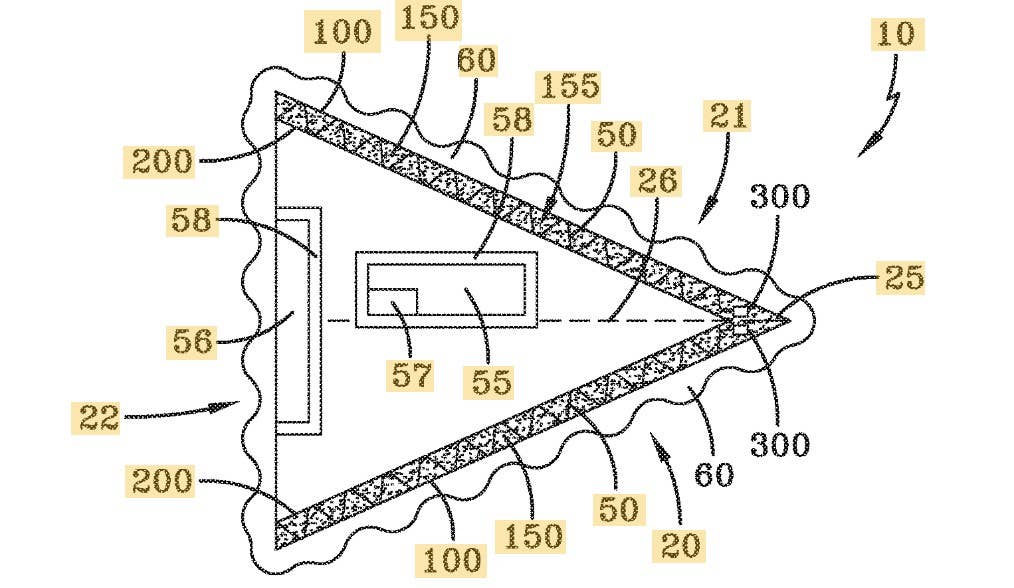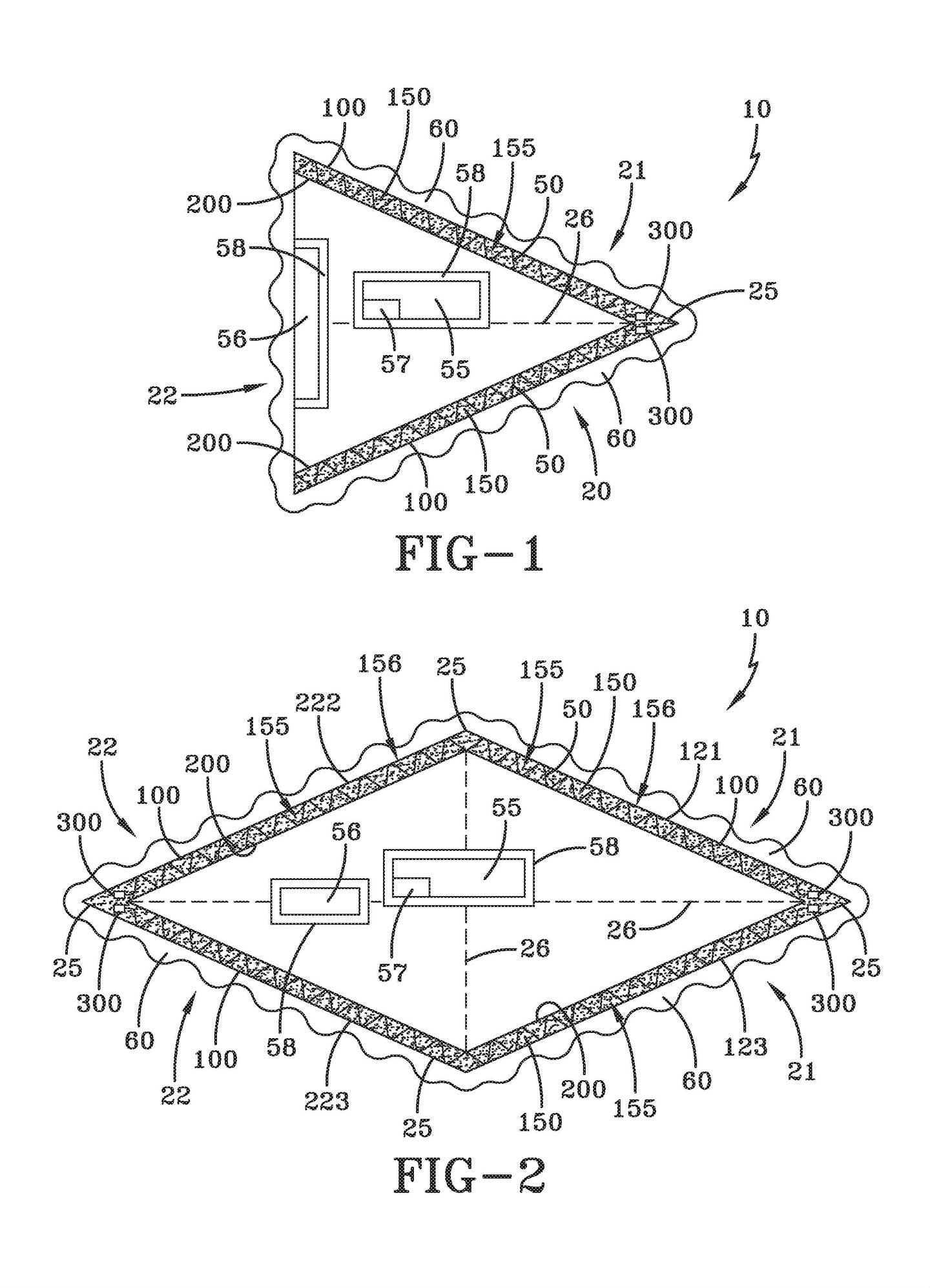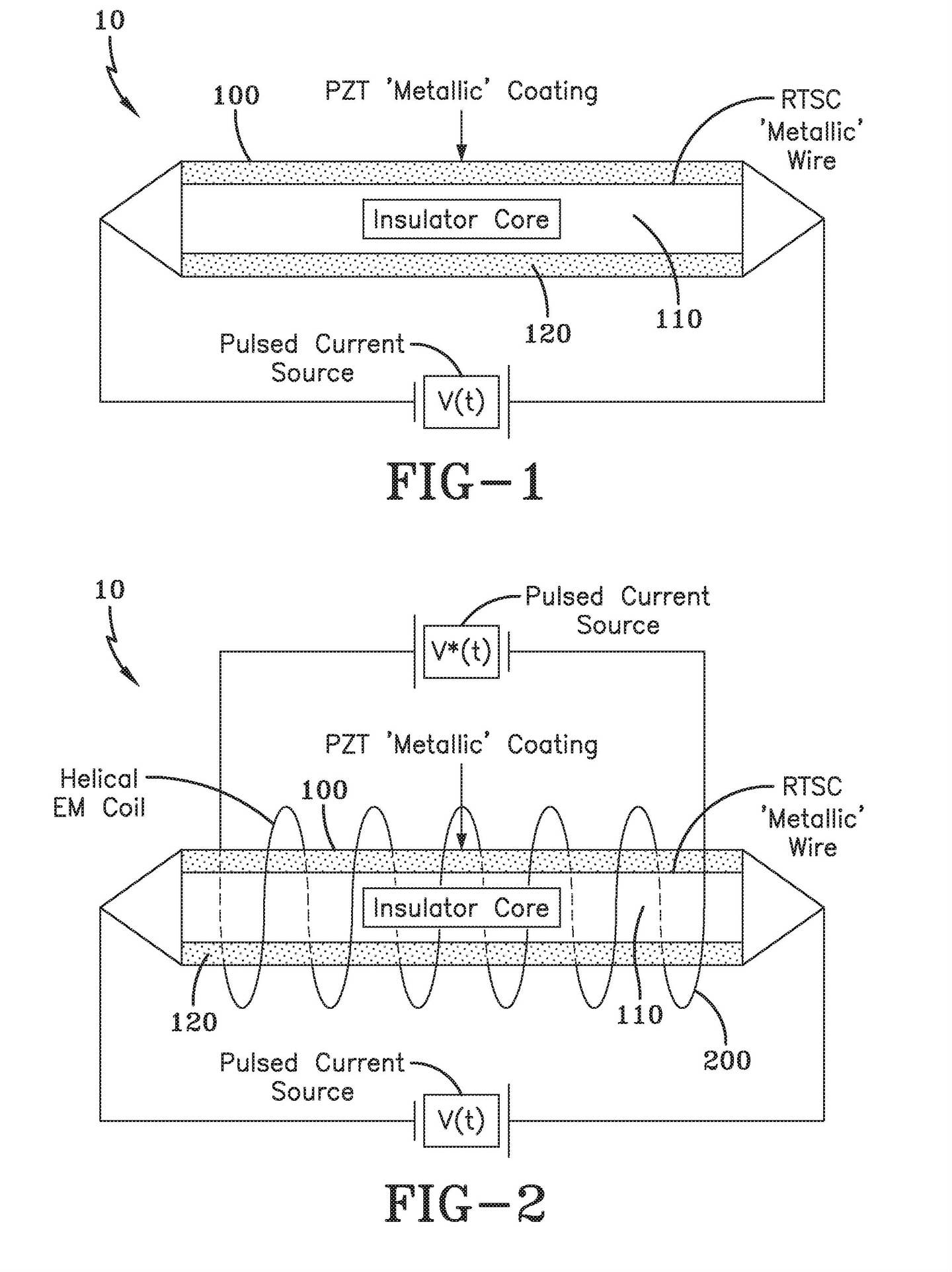
米国海軍が不可能と見られていたUFOの製造技術に関する3つの特許を特許庁に申請し技術情報を公開している。凄い内容だ。
その話を調べていたら、すでに完成し飛行できる実機TR-3Bの映像が送られて来た。どうやら3角形に見える様だ。

The Secretive Inventor Of The Navy's Bizarre 'UFO Patents' Finally Talks - The Drive
https://www.thedrive.com/the-war-zone/31798/the-secretive-inventor-of-the-navys-bizarre-ufo-patents-finally-talks
特許そのものはアメリカ海軍としてではなく、海軍のもとで研究・開発をおこなっている研究者のサルヴァトーレ・パイス氏の名前で出願されています。これは「高周波重力波発生装置」。
US10322827B2 - High frequency gravitational wave generator - Google Patents
https://patents.google.com/patent/US10322827B2/
「圧電誘起室温超伝導体」
US20190058105A1 - Piezoelectricity-induced Room Temperature Superconductor - Google Patents
https://patents.google.com/patent/US20190058105A1/
「電磁界発生器、および電磁界発生方法」
US10135366B2 - Electromagnetic field generator and method to generate an electromagnetic field - Google Patents
https://patents.google.com/patent/US10135366B2/
「慣性質量低減装置を用いたクラフト(飛行機)」
US10144532B2 - Craft using an inertial mass reduction device - Google Patents
https://patents.google.com/patent/US10144532B2/
この「クラフト(飛行機)」と称されるものは、説明によれば真空エネルギー状態を用いて、熱の痕跡を残すことなく、大気中・水中・宇宙で等しく飛行(航行)可能だとのこと。中国も同様の航空宇宙技術にすでに多額の投資を行っているため、この特許が必要である旨の主張を海軍航空試験センターが行っています。
パイス博士に関しては、2019年にIEEE TPSにコンパクト核融合炉に関する論文が掲載されているものの、何者かはほとんどわかっていません。
The Plasma Compression Fusion Device—Enabling Nuclear Fusion Ignition - IEEE Journals & Magazine
https://ieeexplore.ieee.org/abstract/document/8871349
だが、現実のスピードはそれどころではなく、近いうちに日本の入国管理官の目をくぐり抜け堂々とAerianが入ってくる可能性すら出てきた。
アメリカのジャーナリスト、ポール・ワーロック氏の調べによると、米政府と関係をもつAerian トールホワイト種はすでに地球上に1500体が存在すると見積もっている。
写真と情報コードが入ったものがあ個体が識別できる。毎日、何をして過ごしているのかはわからないという。
実際は現実離れした白さだが、ファンデーションで人間色に塗るとトップ写真の様に変身する。
きっと、成田からマツモトキヨシ、名古屋のココカラファインに行くのではないかと見られる。
それでは暑い1日を楽しんでください。
トールホワイトの話は真実です。こちら情報メモを記録しています
https://www.blogger.com/blog/posts/4976859959262175866
CIAがエイリアンについての情報の対象の戦術として「嘲笑に持って行く」という作戦が有効である事に気づき、国家として一定数のアブダクションを認めながら、誘拐者の保護を切り捨ててきた経緯がある。
誘拐を続けたのは別グループだが、日本人には決して理解出来ないほど闇が深く、ほとんどの日本人には理解不能なので、ここに書いています。
The United States Secretary of Navy is listed as the assignee on several radical aviation technologies patented by an aerospace engineer working at the Naval Air Warfare Center Aircraft Division (NAWCAD) headquarters in Patuxent River, Maryland. One of these patents describes a "hybrid aerospace-underwater craft" claimed to be capable of truly extraordinary feats of speed and maneuverability in air, water, and outer space alike thanks to a revolutionary electromagnetic propulsion system.
Sound far fetched? You’re not alone.
A primary patent examiner at the United States Patent and Trademark Office (USPTO) thought so too. But then the Chief Technical Officer (CTO) of the Naval Aviation Enterprise personally wrote a letter addressed to the examiner claiming that the U.S. needs the patent as the Chinese are already “investing significantly” in these aerospace technologies that sound eerily similar to the UFOs reported by Navy pilots in now well-known encounters. This raises the question, are the Chinese developing or even already flying craft leveraging similar advanced technology and is the Navy now scrambling to catch up?
The Wondrous Inventions Of Dr. Salvatore Cezar Pais
The bizarre saga of the U.S. Navy and its sudden willingness to admit that its personnel regularly encounter unidentified objects in the skies keeps getting stranger. Why the sudden shift in policy? What is the motivation for disclosing these encounters to the public? News outlets of all types have for months been discussing the matter, yet we still don't know exactly what is actually happening here.
Clearly, the narrative is being carefully controlled by the Department of Defense and the Navy. We can only base our speculation on what has been released to the public over the last few years through the media and what is public record. With that said, maybe the most curious additions to the still-developing saga is a set strange aerospace patents filed by one Salvatore Cezar Pais, an aerospace engineer at NAWCAD.
While attempting to dig up as much information as possible about the inventor and these patents, I came across some supplemental documents in the USPTO’s databases that seem to imply that Navy leadership knows that these technologies are actually feasible – or that they want us or someone else to think that they are.
Little information can be found about Salvatore Cezar Pais; he has virtually no web presence. What is known is that he received a PhD in Mechanical and Aerospace Engineering from Case Western Reserve University in 1999 and that he currently works as an aerospace engineer for NAWCAD at Naval Air Station Patuxent River in Maryland – the Navy’s top aircraft test base. Pais has published several articles and presented papers at American Institute of Aeronautics and Astronautics conferences over the years describing his work in electromagnetic propulsion, revolutionary room temperature superconductors, and topics like his PhD dissertation: "Bubble generation under reduced gravity conditions for both co-flow and cross-flow configurations."
NASA helped fund his dissertation, a copy of which they have on their website here. A full list of his publications can be found here.
The Navy’s Patented Hybrid Underwater Aerospace Craft
Pais is named as the inventor on four separate patents for which the U.S. Navy is the assignee: a curiously-shaped “High Frequency Gravitational Wave Generator;” a room temperature superconductor; an electromagnetic ‘force field’ generator that could deflect asteroids; and, perhaps the strangest of all, one titled “Craft Using An Inertial Mass Reduction Device.” While all are pretty outlandish-sounding, the latter is the one that the Chief Technical Officer of the Naval Aviation Enterprise personally vouched for in a letter to the USPTO, claiming the Chinese are already developing similar capabilities.
The patent was first applied for on April 28, 2016, over a decade after the Nimitz Carrier Strike Group encountered strange Tic Tac-shaped aircraft and nearly a year after Navy pilots across multiple squadrons flying out of Naval Air Station Oceana and NAS Norfolk experienced a string of bizarre encounterswith unidentified aircraft, some of which, like the Tic Tac, seemed to possess exotic performance capabilities.
The hybrid aerospace-underwater craft in Pais’ patent, meanwhile, is described as being capable of incredible feats of speed and maneuverability and can fly equally well in air, water, or space without leaving a heat signature. This is possible, Pais claims in the patent, because the craft is able to “engineer the fabric of our reality at the most fundamental level” by exploiting the laws of physics.
The concept is fairly simple, although the engineering required to make it a reality is anything but. All matter contains energy on the quantum level. By theoretically creating its own incredibly dense and polarized energy field, the hybrid craft is claimed to be able to create a quantum 'vacuum' around itself which allows it to repel any air or water molecules with which it interacts. Thus, the craft can essentially ignore aerodynamic or hydrodynamic forces, or so it is claimed in the patent.
Hybrid Aerospace Underwater Craft
, A depiction of the hybrid aerospace underwater craft included with the patent application., USPTOThroughout his patents and publications describing the hybrid aerospace underwater craft (HAUC), Pais writes that the radical feats of speed and maneuverability of which the craft is supposedly capable can be achieved by coupling "high-frequency axial spin" or "accelerated vibration" with "high-frequency vibrations of electrically charged systems."
In other words, if you can a) create a room temperature superconductor capable of storing an incredibly high amount of energy and b) get the energy field created by that superconductor moving at incredibly high speeds around or within the craft, you can create a polarized energy vacuum around it which allows it to basically ignore the energy of the air or water around it, thereby removing its own inertia and mass from the equation.
In his most recent publication, Pais describes the hybrid aerospace underwater craft as a roughly cone-shaped vehicle that would appear round from the front or rear: “the HAUC is conical in configuration, with an elliptical cross-section, similar in geometry to a hypersonic glide vehicle / dart.” Interestingly enough, the descriptions of the craft in several of Pais’ publications and even the patent for “Craft using an inertial mass reduction device” include room for a crew compartment shielded by a Faraday cage.
Shortly after the patent for the hybrid craft was approved in 2018, Pais presented another related paper, “Room Temperature Superconducting System for Use on a Hybrid Aerospace Undersea Craft” at the 2019 American Institute of Aeronautics and Astronautics SciTech Forum in San Diego this past January. In the paper, Pais writes that "the achievement of room temperature superconductivity (RTSC) represents a highly disruptive technology, capable of a total paradigm change in Science and Technology,” and adds that its “military and commercial value is considerable."
The capabilities described in the paper should certainly sound familiar to anyone who's been following the Navy UFO stories over the last several years:
It is possible to envision hybrid aerospace-undersea craft (HAUC), which can function as a submersible craft capable of extreme underwater speeds (lack of water-skin friction) and enhanced aerial/underwater stealth capabilities (non-linear scattering of RF and sonar signals). This hybrid craft would move with great ease through the air/space/water mediums, by being enclosed in a Vacuum/plasma bubble/sheath, due to the coupled effects of EM field-induced air/water particles repulsion and Vacuum energy polarization.
HUAC with Components
, Images of the craft in the patent application include a descriptions of the various components such a craft could possess such as: microwave emitters (300); a resonant cavity filled with a noble gas such as xenon (150); a crew compartment (55); a Faraday-type cage to protect crew against electromagnetic fields (58); a cargo bay (57); a power plant system (56); and a frustrum, or nose cone, which is "rotatable about its own axis (25).", USPTOTo help me understand the underlying theory behind the hybrid craft technology described in the patents, I spoke with Dr. Brian Collett, a Hamilton College physics chair who teaches courses in electromagnetic theory and quantum physics. Collett told me that while patents and peer-reviewed articles about theoretical physics are one thing, the descriptions of the HAUC and the claims in Pais’ research "bear no more resemblance to quantum physics as I understand it than does ‘The Force’ from Star Wars." Moreover, Collett adds, "a working room temperature superconductor would have far more radical uses that are actually within the bounds of possibility" than a hybrid craft that can theoretically create a quantum vacuum around itself.
Other physicists I’ve conferred with have stated the same thing – although most of them refused to go anywhere near on the record concerning the hybrid craft patent based on how outlandish it seems. Why then would the Naval Aviation Enterprise CTO personally vouch for this patent to the USPTO?
The ‘Future State of the Possible’
Just because something is patented doesn’t mean it’s currently in production or even possible. Private entities and the U.S. government both regularly patent forward-looking technologies to ensure that they own the rights to them when or if they’re ever fully realized. The patent for the hybrid craft is set to expire on September 28, 2036.
That being said, the unorthodox circumstances surrounding the approval of this patent have us wondering why the Chief Technology Officer of the U.S. Naval Aviation Enterprise, Dr. James Sheehy, personally vouched for the legitimacy of this beyond-revolutionary aerospace technology in the Navy’s appeal to the USPTO. Sheehy assured the patent examiner in charge of this application that the aircraft propulsion method described in the patent is indeed possible or will be soon based on experiments and tests NAWCAD has already conducted.
While plenty of commenters online have seen the patents and claimed that any old crackpot scientist can attempt to patent crazy-sounding technologies far beyond what is currently technologically feasible, I would hesitate to call the CTO of the Naval Aviation Enterprise working on behalf of the Federal Government a crackpot. Then again, it's not impossible.
The application was initially rejected by Patent Examiner Philip Bonzell on the grounds that "there is no such thing as a 'repulsive EM energy field,'" and that "when referring to the specifications as to ascertain about the microwave emitters needed in this system it is seen that for a high energy electromagnetic field to polarize a quantum vacuum as claimed it would take 10^9 [T]eslas and 10^18 V/m." That's roughly the equivalent to the magnetic strength generated by most magnetars and more electricity than what is produced by nuclear reactors.
Obviously, the examiner believed it’s impossible with today's technology to create the insane amount of energy needed to generate the EM field that would propel this craft in the manner described in the patent application. What would be needed to generate such amounts of energy is perhaps the potentially revolutionary room temperature superconductor described in one of Pais’ other patents for which the Navy is listed as the assignee.
Superconductors are materials that can conduct electricity with zero resistance, meaning the electrical currents carried through them never degrade or dissipate like they do in metals, such as copper or silver.
